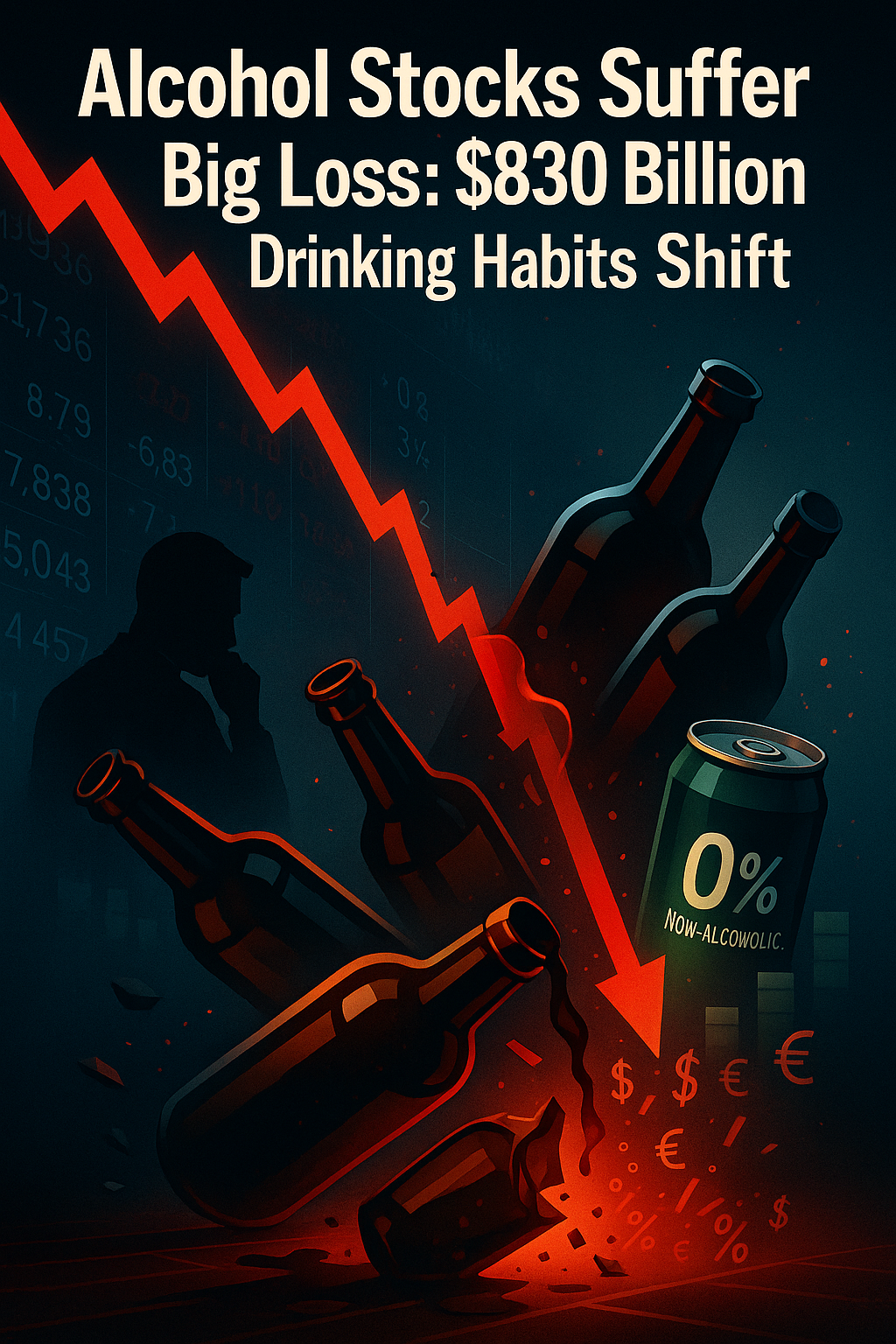The dramatic drop in value across the alcohol sector — where alcohol stocks have taken a staggering loss of around $830 billion — signals more than just a rough patch for the drinks business. It reflects changing drinking habits, new cultural norms, and a shifting landscape for both consumers and corporations.
What happened and why it matters
Since mid-2021, the market value of the world’s major listed beer, wine and spirits companies has plunged roughly 46 percent. That wipe-out of $830 billion is no fluke — it’s tied to fundamental shifts in how people drink, what they expect from alcohol, and what they’d rather do than drink.
Here are the main drivers:
- Declining consumption: Surveys show alcohol use in the U.S. has dropped to its lowest levels since record-keeping began.
- Health and wellness trends: More people are choosing moderation, non-alcoholic alternatives, and prioritizing wellness over late-night drinks.
- Younger generations: Millennials, Gen Z and even Gen X are less likely to embrace heavy drinking in the same way earlier cohorts did.
- Economic pressure & tariffs: Rising interest rates, higher commodity costs, and trade tensions (e.g., with China) are hitting the industry’s margins and demand.
- Cultural shifts: In some markets (like China), official bans on alcohol at functions, weak confidence and changing social norms have all contributed.
How this plays out in the stock-market and business world
The hit has been broad. Companies with strong brands across beer, wine and spirits are seeing their valuations decline. Some of the notable themes:
- Premiumization vs volume decline: While overall volumes are down, some firms are betting on premium or super-premium products to hold value.
- Non-alcohol business pivot: Many companies are investing in alcohol-free alternatives and new beverage formats to offset the drop.
- Emerging markets become more crucial: With mature markets slowing, growth hopes are shifting to high-potential regions where drinking habits may rise or premium segments may scale.
- Investor sentiment is mixed: Some see bargains (value play), others see structural decline and are staying away.
Drinking habits are changing — fast
This is more than a short-term blip. The way people drink, or don’t drink, is evolving. Consider:
- The drop in alcohol use is becoming structural, not just cyclical.
- “Dry January” and other sober-curious movements have expanded into everyday life, especially among younger consumers.
- Non-alcoholic and low-alcohol alternatives are gaining ground and challenging the mainstream.
- Leisure has more options now: gaming, streaming, other forms of socializing — alcohol is simply less central.
- Health messaging is stronger: warnings, new research and wellness lifestyles all shift consumption behaviour.
Why this story should grab your attention
Whether you’re an investor, consumer, or industry watcher, this development matters:
- For investors: The $830 billion hit in alcohol stocks suggests risk in what had been a “safe” consumer-staples sector.
- For businesses: Producers need to rethink their models — focusing on brand, diversification, consumer behaviour, and global market dynamics.
- For consumers: What you drink (or choose not to) has ripple effects — on culture, business, pricing, availability and innovation.
- For policy and social context: The drop in drinking intersects with public health trends, regulation, alternative substances (e.g., cannabis) and generational shifts.
What’s next: key areas to watch
- Non-alcohol growth: Will alcohol companies successfully pivot to non-alcoholic beverages or lose relevance?
- Emerging-market momentum: Are growth markets able to pick up the slack for global producers?
- Premiumisation: Can premium brands offset volume losses with higher margins?
- Regulation & wellness: How will health campaigns, taxation and shifting norms shape demand?
- Alternative leisure & substance use: With more options for consumers, will alcohol’s traditional role diminish further?
The takeaway
In short: the era when drinking behaviour followed a predictable path is over. The fact that alcohol stocks have taken a roughly $830 billion hit means the only safe bet is change. Companies, investors and consumers all need to adapt. The future of the alcohol industry is less about the volume sold and more about relevance, choice, health and innovation.
FAQ
Q1: Why did alcohol stocks lose so much value?
A: Because drinking habits changed — fewer people are drinking, and many are choosing non-alcoholic or moderate options. Add in cost pressures, tariffs and weak global demand, and the sector’s outlook dims.
Q2: Does this mean people are quitting alcohol entirely?
A: Not exactly. Many are moderating or shifting to alternative formats, but total abstinence is not the only driver. The key change is how and why people drink.
Q3: Could this trend reverse?
A: Possibly, but most analysts believe the changes are structural rather than temporary. That means we’re unlikely to see a simple return to “old” consumption patterns.
Q4: Are any alcohol companies thriving despite this?
A: Yes — firms that focus on premium brands, non-alcoholic alternatives, or growth markets show better prospects. But they are the exception, not the rule.
Q5: What does this mean for consumers?
A: It means more choices (non-alcoholic drinks, ready-to-drink formats, premium options) and possibly changes in pricing or availability as companies adjust their models.
Q6: How should investors think about this sector now?
A: With caution. The $830 billion loss suggests significant structural risk. If you invest, focus on companies with clear innovation, global growth and adaptation strategies — not just legacy brands relying on volume.


